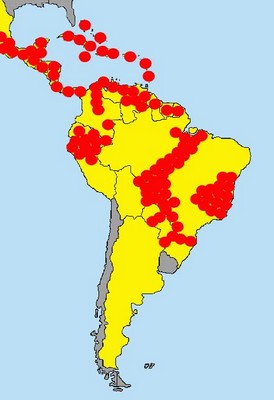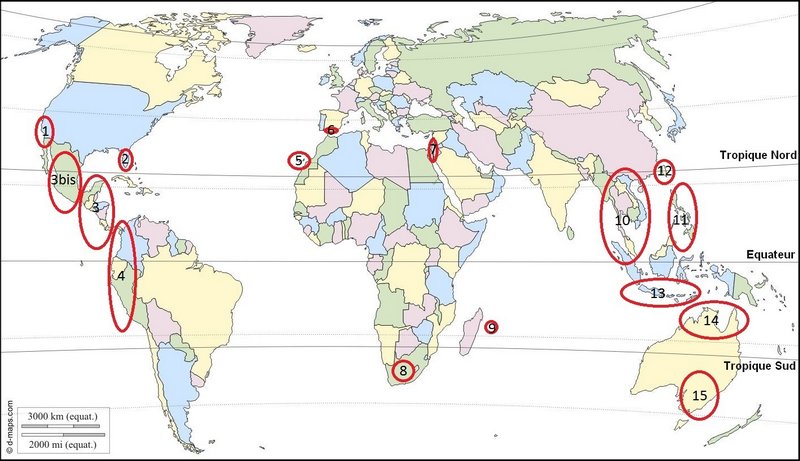*** DRAGON FRUIT ***
***** IN CALIFORNIA *****
***** AND ELSEWHERE. *****
____________________
This article is based on data from a trip I made to California in August 2015. Some data may have changed since then.
_______________________
CHAPTER 1 (page 1)
The origins and "travels" of Dragon fruit.
_______________________________
Page 1 / 8 of the article.
________________________________
Dragon fruit is the fruit of the species Hylocereus undatus and by extension of the other Hylocereus.
Hylocereus undatus is a semi-epiphytic or lithophytic cactus, whose exact origin is unknown. It's located approximately in the dry areas of Central America (Southern Mexico, Salvador, Guatemala, Costa Rica).
Its name would come from the tortuous shape of the stems and presence of scales on the fruit, which could evoke the appearance of a Dragon.
A legend of which I don't know the origin also says that thousands of years ago, a dragon in battle with soldiers started to spit fire and that the fruit was what came out of his last breath. The fruit was offered by the victorious soldiers to their Emperor.
The fruit is often part of religious offerings, especially in Indonesia on the island of Bali, as I have seen.
The genus Hylocereus (14 or 15 species according to current authors) is a genus of semi-epiphytic cacti, climbing and growing in forests. (Hylocereus means forest candle)
The genus Hylocereus is widely distributed in Mexico (south and central), Central America and the northern part of South America as far as Peru, Guyana and the Caribbean islands.

Geographical distribution of the genus Hylocereus
(natural biotope of origin)
© Joël Lodé/Taxonomy of Cactaceae, courtesy of the author.
The genus was then transported by human means to other parts of the world.
The fruits of the Hylocereus are also called Pitahaya or Pitaya (the taïno word meaning "scaly fruit", taken up by the Spanish speaking people.)
The Tainos are an Amerindian ethnic group that was occupying the Greater Antilles when Europeans arrived in the 18th century.
The presence of the two names "Dragon fruit" and "Pitahaya" shows that Dragon fruit is a multicultural fruit (the word "Pitahaya" is Amerindian then the European or American phrase "fruit du Dragon" or "Dragon fruit" comes from Vietnamese "Thanh Long".
The fruit is now grown around the world.

Countries of cultivation of Hylocereus (non-exhaustive list)
1 and 2 - USA (California and Florida)
3- Central America (Mexico, Guatemala, Honduras, Nicaragua, El Salvador, Costa Rica, Mexico)
3bis- Mexico
4- South America (Colombia, Ecuador, Peru)
5- Canary Islands
6- Southern Spain
7- Israel
8- South Africa
9- Reunion island
10- Southeast Asia (Vietnam, Thailand, Malaysia)
11- Philippines
12- Taiwan
13- Indonesia
14 and 15- Australia
Some species produce white pulp fruits (particulary Hylocereus undatus). Others give fruits with pink or red pulp. With the exception of Hylocereus megantus (white pulp), fruits with pink or red pulp often taste better than others.
Hylocereus undatus was exported to Asia and in particular to Viet Nam by French people. Then it returned to California through the Vietnamese community in the 19th century.
California has become a major focus of research and cultivation.
___________________________________
BACK TO THE SUMMARY OF THE ARTICLE
_________________________________________